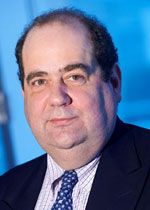“If you talk to a man in a language he understands, that goes to his head. If you talk to him in his language, that goes to his heart”. The language of our thoughts and our emotions is our most valuable asset.
Source: Ms Irina Bokova, Director-General of UNESCO, on the occasion of International Mother Language Day 2012
Today one of our partners, the United Nations Educational, Scientific and Cultural Organization (UNESCO) celebrates International Mother Language Day, which aims to promote linguistic and cultural diversity and multilingualism. I wanted to take this opportunity to highlight the urgency of the situation and what Microsoft is doing to promote the use of mother tongue languages while also making technology more accessible for speakers of those languages.
With the launch of Windows 8, we have added 13 extra languages to our range of Language Interface Packs (LIPs), bringing the total number of languages supported by Windows 8 and Office 365 to 108. Downloadable free of charge, LIPs enable the user to install a local language version as a “skin” on top of an existing installation of the Windows operating system and standard Microsoft Office system applications. Promoting access to mother languages is crucial to ensuring the survival of people’s common, living heritage. It is linguistic and cultural ties that strengthen communities and promote cohesion.
This is the largest number of languages we’ve ever supported, and the 13 new languages have a potential reach of 130 million speakers. These include speakers of languages in emerging markets, like Wolof in Senegal, and Punjabi in Pakistan, which are widely spoken but hardly used in new technologies. With approximately 60 or so languages dominating the internet, including speakers of these languages in technology is a way of providing a voice to communities. More accessible technology also strengthens the local IT economy, increases individual productivity, and stimulates activity in local businesses and governments. It also includes countries where a widespread language like English is the official language, giving native speakers the option to use technology in their mother tongue. The 60,000 speakers of Maori in New Zealand and the 16,000 speakers of Cherokee in the US now have this option. See UNESCO’s Atlas of the World’s Languages in Danger to find out where such languages exist.
This expansion was made possible by the Microsoft Local Language Program (LLP), which provides people access to technology in a familiar language while respecting linguistic and cultural distinctions. For each language, every one of the 3,000 terms used in the interface goes through an independent verification process. This means that each word has been debated and agreed upon by experts, providing not only a tangible directory of terms to use as a basis for translations, but also a historical archive of terminology from a language that may not exist in centuries to come.
The Microsoft LLP also includes a number of special features, all for free. Microsoft Translator, for example, provides real time translation for 40 languages, including a language as limited in reach as Hmong spoken in Laos by a mere 170,000 people.
In Spain, the Microsoft LLP partnered with UNESCO to enable students in Basque Country, Valencia, Galicia and Catalonia to learn, communicate and create in their local language as well as Spanish while gaining important 21st century skills. The program enables 17 million people — 40% of the population — to access technology in their native language. Watch a video on how the program has helped to improve educational outcomes and academic results here.
The impact of the Microsoft LLP’s efforts to broaden access is two-fold – as well as helping to preserve languages and cultural identities, using technology in these languages helps them to evolve and develop, pushing them to modernize and stay relevant in the modern age.

